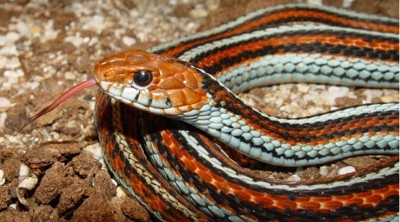Recent Report Demonstrates Urgency of Restoring Wetlands at Sharp Park

A San Francisco Garter Snake, one of the residents of the wetlands at Sharp Park
A new report suggests that San Francisco cannot wait any longer to restore Sharp Park. The report, completed by over 100 scientists and 17 government agencies, states that at least 54,000 acres of wetlands surrounding the bay must be restored in the next 15-20 years in order to protect coastlines from sea level rise.
Sharp Park is one area that can and should be restored. Located on the shore of Pacifica, Sharp Park is filled with wetlands and endangered wildlife, making it both a feasible and ideal location for restoration, as has been proposed by Wild Equity and other groups. But alas, the golf course has turned a blind-eye to the sensitivity of the habitat by draining the wetlands and slaughtering the wildlife on the regular.
To add to the damage, the San Francisco Recreation and Parks Department wants to not only keep draining wetlands at Sharp Park Golf Course, but in addition spend millions of taxpayer dollars on redevelopment that would put the area at higher risk of inundation due to sea level rise, ultimately putting the golf course on a path to an even more unsustainable future.
Given the urgent 15 year deadline highlighted in the report, San Francisco must take the advice Wild Equity has proposed for years, and shut down the money-draining golf course immediately to begin restoration. Closing the golf course and restoring Sharp Park would not only prepare the area better for the sea level rise anticipated by the end of the century, but would provide locals with countless recreational opportunities, provide the city of Pacifica with increased tourism-based revenue, and allow for the endangered San Francisco Garter Snake and California Red-Legged Frog to thrive in peace.
Why wetlands?
Wetlands “break up wave energy”, making them a useful tool for mitigating flooding and sea level rise. Furthermore, wetlands clean water by filtering pollutants, act as a carbon sink, and provide habitat and migratory hotspots for birds, fish, and other wildlife- including the federally protected San Francisco Garter Snake and California Red-Legged Frog.
Moreover, wetland restoration is practical- major efforts in the South Bay have already enabled the return of wildlife such as Ridgway’s Rail and the Salt Marsh Harvest Mouse, and it is by far less costly than building levees and seawalls to protect against sea level rise.
Don’t let San Francisco keep pouring taxpayer dollars into this unsustainable golf course. Click here to find out how you can take action and help our campaign to restore Sharp Park.

Leave a Reply
Want to join the discussion?Feel free to contribute!